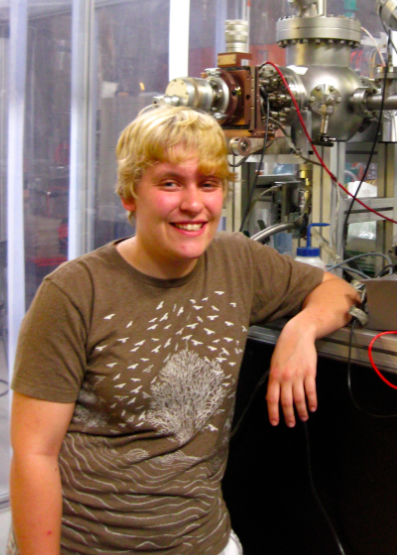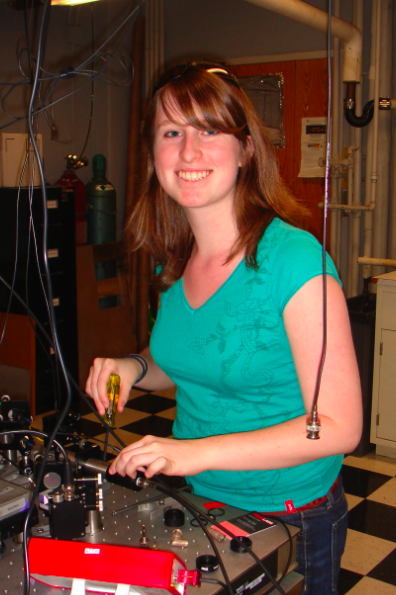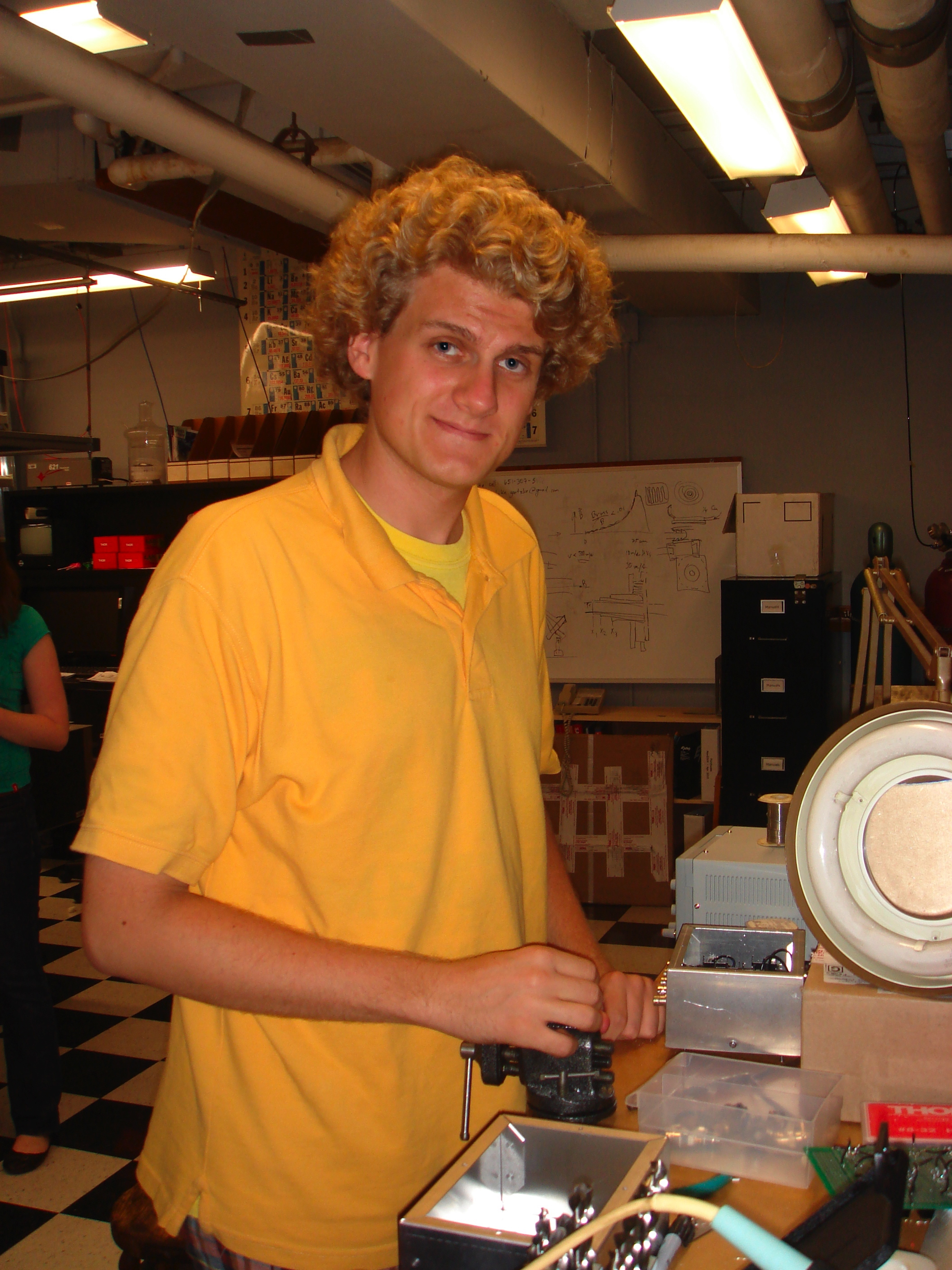|
|
Education & Outreach
2010 REU @ Nevis Labs & Main Campus
 |
Catherine worked on an experiment to measure the reflective properties of PTFE in conditions similar to those in the XENON100 detector.
PTFE has a high reflectivity in general, and so the XENON100 TPC is enclosed with it.
This is to prevent light loss: when collisions occur, the emitted light may reflect off the inner boundary
before being detected by the upper or lower arrays of PMTs.
Enclosing the TPC with PTFE helps ensure that the signals are properly recorded.
Though PTFE is known to have high reflectivity in general, reflectivity properties have not been investigated
with xenon scintillation light at cold temperatures.
The setup used to measure reflectivity consists of a deuterium light source, a monochromator, a vacuum chamber, the PTFE sample,
and a PMT for detecting reflected light.
The apparatus can also be used to make relative measurements of the quantum efficiency of the PMT.
At the respective
links, one may find
Catherine's report
and presentation on her summer research.
|
 |
Christine worked on the Atom Trap Trace Analysis (ATTA) project.
The ATTA is a system being designed to count the low level krypton contamination in the xenon used in the XENON Dark Matter experiment.
Christine worked on developing a laser linewidth measurement system for the laser in the ATTA system.
It is necessary to know the precise linewidth of the laser to ensure that it is smaller than that of the atomic transition of the krypton atoms
to be trapped in the system.
Christine tested and calibrated a voltage amplification device, or driver, to power a homemade Fabry-Perot interferometer.
She successfully used the driver and Fabry-Perot to measure key characteristics of the interferometer and the linewidth of the laser.
Christine also tested and improved upon a photodiode circuit that she set up behind the interferometer.
She used the signal from the photodiode to analyze the characteristics of the laser light going through the interferometer.
At the respective
links, one may find
Christine's presentation
and paper on her summer research.
|
 |
Evan's primary project with the ATTA during the summer was the design and construction of the anti-Helmholtz coils for the magneto-optical trap (MOT),
integral to collimating and decelerating the 84Kr atomic beam. This activity was mostly comprised of modeling the optimal magnetic field necessary
for the MOT and consequentially designing the solenoid and MOT assembly, i.e., the structure holding the MOT chamber and MOT coils firmly in place.
The magneto-optical trap's primary function is to capture and produce cold, neutral atoms to temperatures approaching microkelvins.
Atoms are initially slowed by a Zeeman slower under an ultra-high vacuum.
After the atomic beam has been decelerated to a suitable velocity, the quadrupole magnetic field induced by the anti-Helmholtz coils, along with
the combined effects of three orthogonal polarized laser beams in each of the Cartesian coordinates, will be powerful enough to capture atoms.
Each pair of the anti-Helmholtz coils carry an equal electric current flowing in the opposite direction, which creates a magnetic field gradient,
at the center of which is zero. Atoms drifting out of this center will be brought into resonance by the laser beams, i.e., said atoms absorb photons,
providing the momentum necessary for atoms to return to the center of MOT chamber, hence being trapped.
The design of the MOT coils required hollow, square copper wire, through which a current of water would flow.
It was essential to take into account an appropriate power supply, as well as the spatial constraints of the experimental set-up
during the design and construction of the MOT coils and in particular assembly structure.
|
|